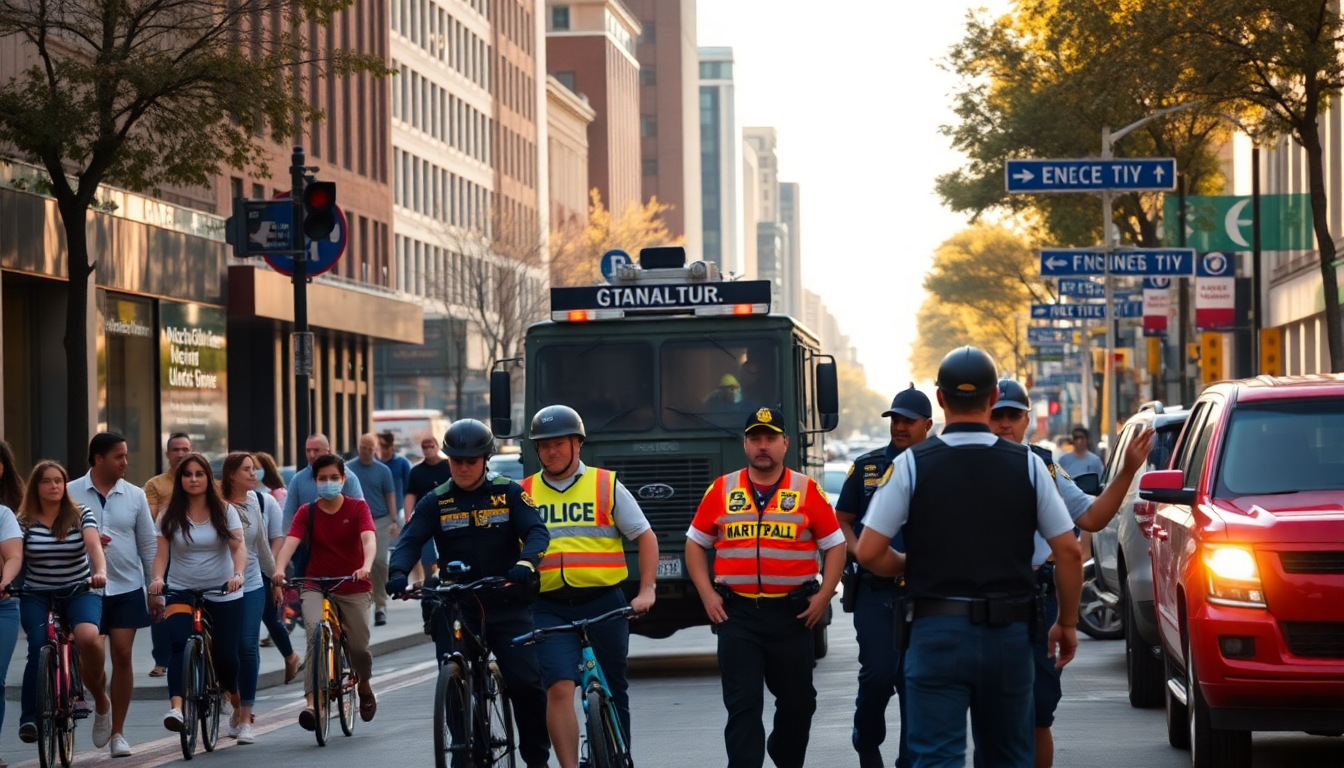Table of Contents
The landscape of law enforcement in Washington, D.C. is changing rapidly, and it’s difficult to ignore the federal government’s increased presence aimed at tackling crime. This shift, led by various federal agencies, including the National Guard, has sparked a mix of reactions from local officials and the community.
As we dive into the crime statistics being reported and analyzed, it’s crucial to consider both the immediate and long-term implications of these measures on public safety and local governance. What does this mean for the daily lives of D.C.
residents?
Current Crime Trends and Federal Intervention
Recent statistics from the Department of Justice have unveiled a troubling rise in crime rates in Washington, D.C. But after the federal law enforcement takeover, authorities have reported over 1,094 arrests and the seizure of 115 illegal firearms.
Attorney General Pam Bondi has pointed to these numbers while underscoring ongoing operations aimed at dismantling gang activities, particularly those connected to notorious groups like Tren de Aragua and MS-13. The National Guard’s involvement adds an extra layer of federal oversight, clearly signaling a strong response to growing public safety concerns.
Bondi’s announcements reveal a notable increase in arrests, especially those linked to gang activities, alongside a decline in certain crimes like carjackings. This contrast raises some interesting questions: Is federal intervention more effective than local law enforcement efforts? Critics, including local leaders such as D.C.
Attorney General Brian Schwalb, argue that these federal actions may undermine local governance and the community’s capacity to address its own public safety issues.
The debate about crime in D.C. has heated up, particularly with accusations of misleading crime statistics from local officials.
The President’s claim of a safer D.C. following these federal measures stands in stark contrast to concerns voiced by local authorities about the potential erosion of community trust and autonomy. So, where do we go from here?
The Role of Local Governance Amid Federal Oversight
The introduction of federal measures aimed at reducing crime has ignited a discussion about the balance between federal and local authority. Many local leaders, including Mayor Muriel Bowser, have voiced worries about the consequences of federal overreach. They believe that effective public safety strategies should be rooted in community engagement and data-driven policies that truly reflect local realities.
Schwalb’s criticism of the Executive Order abolishing cashless bail highlights the contention surrounding the federal approach to crime. He argues that effective pre-trial detention should focus on flight risks and public safety threats rather than financial capability, advocating for a more equitable justice system. This growing tension between local governance and federal involvement raises significant questions about the future of law enforcement in Washington, D.C. How can the system adapt to evolving crime patterns while respecting local control?
Moreover, some community members are understandably apprehensive about the long-term implications of a militarized response to crime. The presence of federal agencies like ICE and the FBI, working alongside local police, has sparked fears of an overly policed environment that could strain community relations. Are we trading safety for trust?
Looking Ahead: Predictions and Community Impact
As federal intervention continues, the immediate effects on crime rates will be under close scrutiny. The Department of Justice’s focus on curbing gang violence may yield some short-term successes, but what about the sustainability of these measures? Increasingly, there’s a sentiment that community-led initiatives, paired with federal resources, might just offer a more balanced approach to public safety.
Community engagement will play a vital role in shaping the conversation around public safety in D.C. Moving forward, it’s essential for local officials and federal agencies to work together, ensuring that interventions not only tackle crime but also build trust within the community. The pivotal question remains: How can we maintain public safety without compromising local governance?
In conclusion, the ongoing federal law enforcement actions in Washington, D.C. mark a crucial shift in crime management strategies. While we may see immediate results, the long-term impact on community safety, governance, and public trust will need careful consideration and ongoing dialogue among all stakeholders involved. What’s your take on this complex situation?





